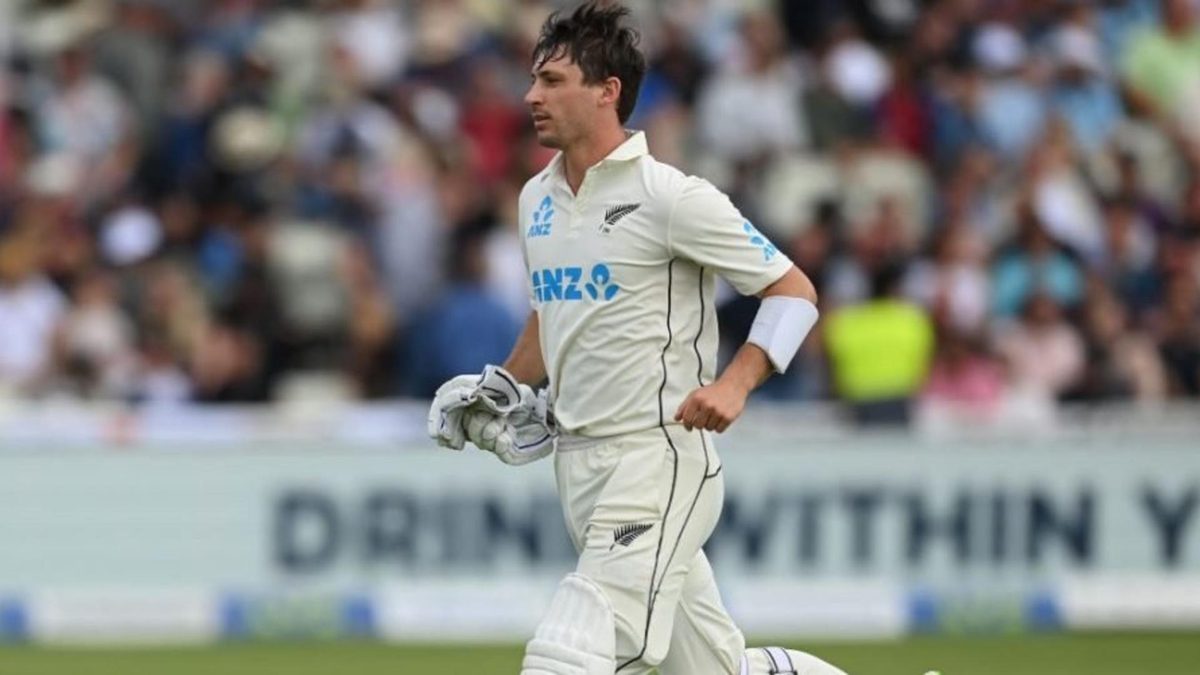
With a shot in the arm after their first Test series win in England since 1999, New Zealand head into the World Test Championship final with confidence, but also have a few questions to sort to arrive at a final XI for the WTC final.
As many 17 New Zealand players played in the two Tests against England with the Kiwis leaving no stone unturned in terms of preparation as they head into another final in an ICC event in this country, two years after suffering a harrowing experience, albeit in a different format. Test cricket is a different ball game, and New Zealand have shown they have found the formula to ace it. Perched atop the ICC Test team rankings, New Zealand still have some major selection decisions to make in their XI for the WTC final.
Should there be a spinner? If so who?
After the first Test, it seemed like a spinner was surplus to New Zealand’s requirements. Mitchell Santner sent down 23 wicketless overs, going at nearly three runs per over, all while Colin de Grandhomme jogged in and bowled one over fewer while going at less than two runs per over. With the holding job sorted, a spinner in the final XI for the WTC final seemed an unlikely proposition. This was until an injury to Santner forced Ajaz Patel into the XI for the second Test and the 32-year-old showed he could do more than just a holding job. He troubled even the assured Joe Root to become a strong contender for a place in the XI for June 18th. Ajaz’s case is bolstered by the fact that India’s top five has all right-handers. But if Ajaz plays, which quick bowler makes way?
Jamieson, the all-rounder?
If Ajaz has to play, New Zealand have the difficult decision of deciding which of their fast bowlers make way. Unless they drop one of Kyle Jamieson, Tim Southee, Trent Boult or Neil Wagner, New Zealand will have to compromise on their batting depth to play Ajaz, making his selection tricky despite the obvious merits. That said, there is a case for Kyle Jamieson, who started his Test career with scores of 44, 49 (both against India) and 51* and averages 47.00 after seven innings, to bat at No.7.
Pace is still their strength
Pace is still New Zealand’s biggest strength and in the first Test, the benefits of a five-prong pace attack, as ridiculous as that sounds, were evident. With de Grandhomme doing the dirty work, the four frontline quicks — Kyle Jamieson, Tim Southee, Trent Boult and Neil Wagner — can all be picked to test the Indian top-order in conditions that aid their fast bowlers. It also avoids the difficult decision of choosing between their four fast bowlers who have been instrumental in their success. This exact five bowler combination has played just one Test before – against India in Christchurch last year when each did their job to perfection to help the side to a seven-wicket win.
Fitness concerns for Williamson, Watling
Both Kane Williamson and BJ Watling missed the second England Test, but are expected to be ready to make it to the New Zealand XI for the WTC final. But if they don’t, New Zealand will probably bank on Will Young — recent runs under his belt in England should help his case — and Tom Blundell like they did in the second Test against England. Will that change the team dynamics?
It’s not far-fetched to suggest that Devon Conway and Will Young swap batting positions: while Conway’s favoured batting position in first-class cricket is No.3, Young’s is opening with the batsman finding recent success at the top for Durham in the County Championship. This will not only bolster that middle-order further, but will also give a proper opener a go at the top against the new ball that India will want to exploit. This is unlikely given Conway’s roaring success in the England series, but there’s a case to be made for Young’s inclusion any way.
Young in a fully fit XI?
It’s a bit of a stretch, but New Zealand will surely know that they have one of the best bowling attacks in the world, but are also up against a pretty stronger Indian bowling group. Bolstering their batting, especially if Williamson is still not 100 per cent, is a possibility. This brings Young into contention as one of the top seven batters with just the four frontline quicks. Well, there’s Williamson after all to act as the spinner in the side — no scoffing at his bowling average of 19.88 after more than 57 overs in England, victims including Alastair Cook (twice), Ian Bell (twice) and Ben Stokes — with more batting depth to shield the side from India’s strong bowling attack.








